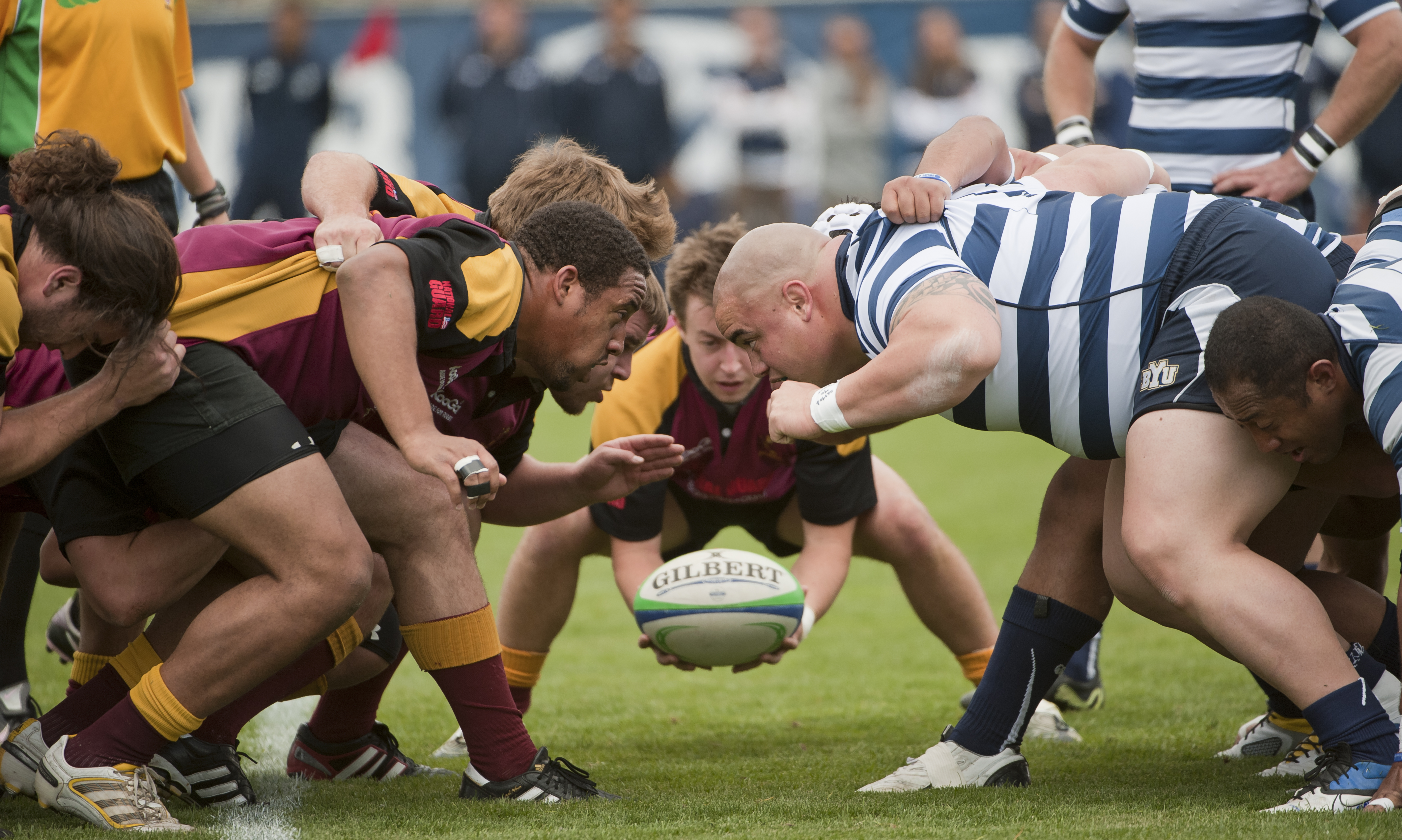This post is also available in:  Italian
Italian Spanish
Spanish French
French
“Rugby is a hooligan’s game played by gentlemen.” Winston Churchill
The Rugby World Cup is coming and you have no clue about the rules of the game? You cannot understand why they carry the ball with their hands, kick it and do all the other funny things?
I have bad news for you: rugby rules are not very easy to learn. Indeed, rugby might seem like a confusing game, but actually it has a sound amount of laws to follow and know (yes, rugby rules are actually called laws).
Let’s explain some:
The ball
First thing to understand: the ball is oval. Don’t ask why, it’s just an oval ball. And please, avoid saying to a rugby fan: “If the ball had been round, it wouldn’t have bounced in that funny way”.
Unpredictable bounces are part of the fun.
The numbers
The numbers on the uniforms of the players are not random. Every number corresponds to a role in the team. To simplify:
From 1 to 8: the forwards. The big boys (or girls) of the team, whose role is to gain possession of the ball and pass it to the backs. Together they form the scrum.
From 9 to 15: the backs. Is the lighter and faster part of the team, the players that usually score the tries.
The score
There are four (yes, four) ways to score in a rugby match: the try (5 points), the conversion kick (2 points), the penalty kick (3 points) and the dropped goal (3 points).
To score a try, a team has to touch the ball on the ground, beyond the try-line of the opponents’ field.
After a try, the team has the possibility to gain 2 additional points thanks to the conversion kick. The ball has to be kicked and fly between the goal posts. The point from where the ball is kicked is in line with where the try was scored.
The penalty kick is awarded by the referee to team after the opponents committed some infringements. The ball has to pass through the goal.
The dropped goal can be scored during the action, kicking a ball after it was dropped and hit the ground. As the other kicks, the ball has to pass through the goalposts.
The offside and the forward pass
If you see a player passing the ball forward, you are allowed to go “THAT WAS FORWARD!” in a in a rather scornful tone.
In fact, the ball can be passed only to a teammate behind the ball carrier. For the same reason, every player who’s standing forwards the teammate or behind the ball when the opponents have it is in an offside position.
The tackle and the maul
To stop a player who’s carrying the ball, the opponents can tackle him (or her). ONLY players with the ball can be tackled. A player, who has been tackled to the ground, has to release the ball, no matter how many players are laying on him/her.
If the player has been tackled, but not bought to the ground, his/her teammate can help to carry the goal-line, simply pushing the ball carrier. This is called a maul.
The scrum
Surely it’s the most iconic moment of the sport. It’s used to restart the game after a minor offense. The forwards of a team (the big boys/girls) attach to each other and push against the other team scrum. The ball is put in the scrum and the players have to move back the ball -toward their half of the field- with their feet and on the same time avoid that the other team gain the ball.
The advantage
One of the beautiful and incredibly-difficult-to-understand-for-newbies peculiarities of this game. Simply speaking, when a team commit an error, the referee will not stop the game but give an advantage to the other team, meaning that the team can capitalize on the error. If this doesn’t happen, the referee stops the game and makes it restart where the error was made.
No-no things
Rugby might see a quite violent game, but if you arrived at the end of our (concise) list, you understood that the sport is regulated by A LOT of laws.
Here a list of things a player cannot do. If you witness to some of this infractions, you can scream at the TV:
Tackle at the neck, tackle early or late, ram a player, hold or strike an opponent without the ball (except in the scrum, the ruck or the maul), punches, elbows or headers, stepping or kicking an opponent, jump over an opponent, tackle with a rigid arm, tackle a player whose feet are off the ground.
The time
A rugby match lasts around 80 minutes, with a 10 minute break in between the two halves. The referee doesn’t stop the game at the 80’ minute, but he waits for the players to finish the last action. So a team can score even after the 80 minutes.
Beside the 2 halves, a rugby match usually includes the third half. This part of the match is played in a pub, involves gallons of beer and other drinks, and fans and passers-by can join (usually fans play this part of the match in a different pub from the team, and this create a community atmosphere all over the places).
Are these all the laws of the rugby? No, my dearest readers, these are just some of the laws. I warned you, rugby has many laws to follow.
Our list aim is just to make you a bit more aware of what you are looking at, if you don’t want to make a fool of yourself.


